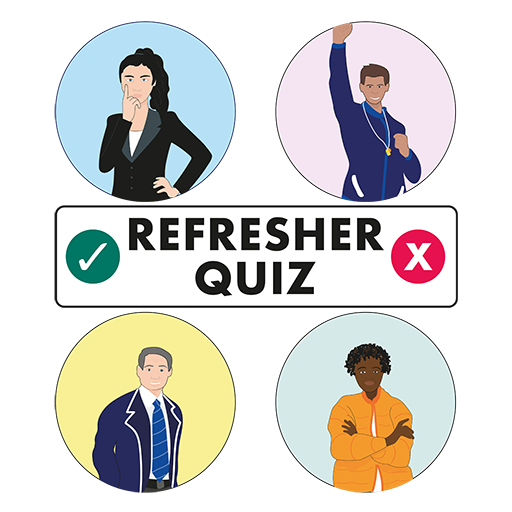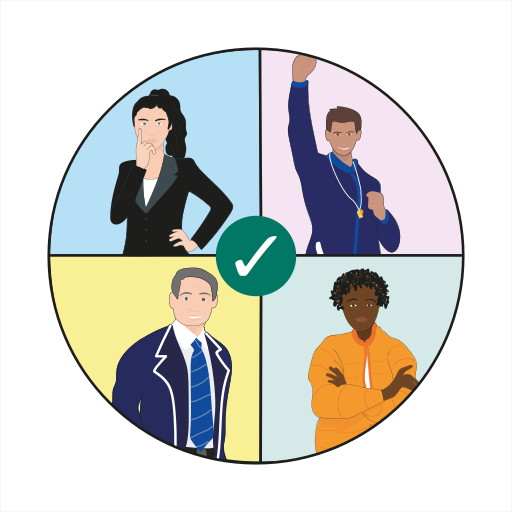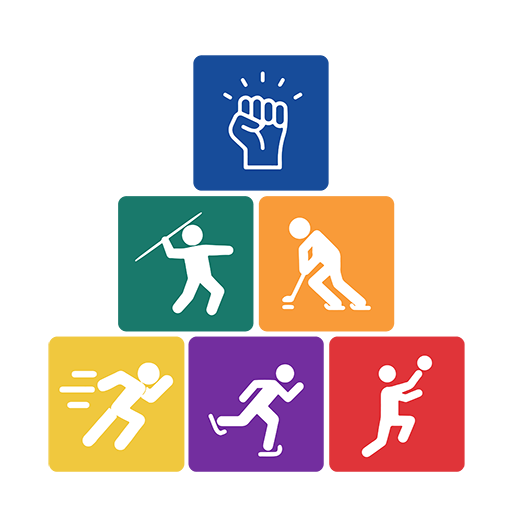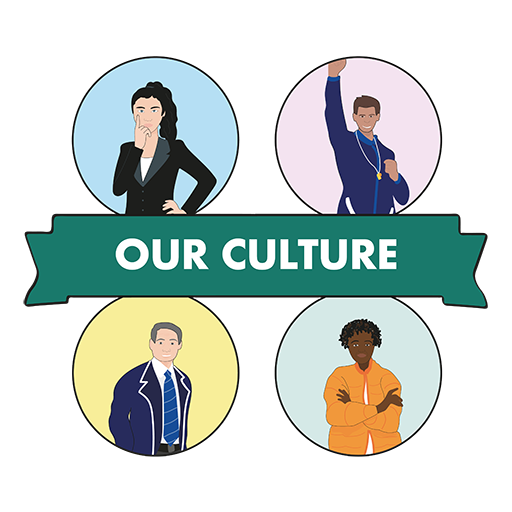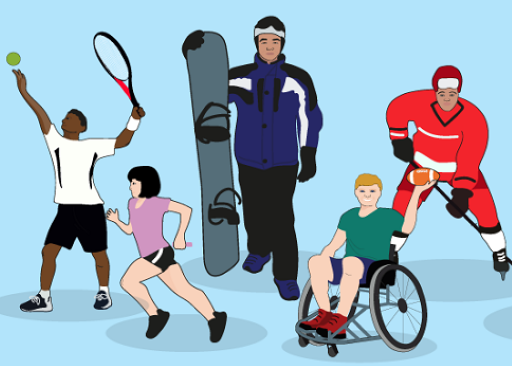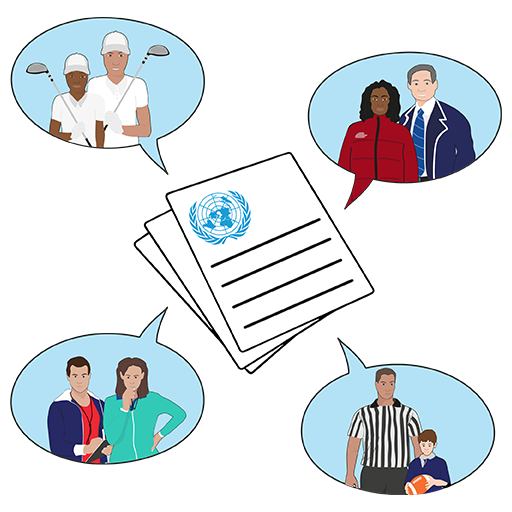Use 'Print preview' to check the number of pages and printer settings.
Print functionality varies between browsers.
Printable page generated Sunday, 23 November 2025, 9:33 AM
Session 1 Safeguarding and culture
1.1 Introduction
Let’s start your learning by exploring safeguarding and culture.
Learning outcomes
In this session, you will:
Revisit the basic principles of safeguarding. |
Explore the role that culture plays in creating a safe environment. |
Investigate why an understanding of human and child rights is important. |
You get started by revisiting some basic principles.
1.2 Basic principles: what is safeguarding?
Before you begin, it is useful to remind yourself what is meant by safeguarding.
 Refresher quiz on safeguarding
Refresher quiz on safeguarding
a.
Specific health and safety actions that prevent accidents.
b.
A system to report allegations when someone may have been abused.
c.
Having a safeguarding
d.
A range of actions to minimise risk and respond to concerns when they happen.
e.
Checking the criminal records of staff and volunteers.
The correct answer is d.
d.
That’s right! This definition covers all the preventative and responsive safeguarding measures your organisation needs.
a.
Identify a risk, talk to management, change the policy.
b.
Identify a risk, assess how serious it is, respond to minimise it.
c.
Identify a risk, talk to athletes, change the activity.
The correct answer is b.
a.
The size of their family.
b.
Their understanding of national laws.
c.
Their type of school education.
d.
Personal beliefs, values, and life experiences.
The correct answer is d.
a.
True
b.
False
The correct answer is a.
a.
Any crime has been proven.
b.
You fill in a form to report a concern to someone.
c.
You are worried a child or adult may be experiencing abuse.
The correct answer is c.
Comment
In the Safeguarding Essentials course, you learned that safeguarding means preventing abuse, harassment, and exploitation by identifying and minimising risks. It also involves responding appropriately when there are concerns that people have suffered or are at risk of suffering harm. Safeguarding includes some elements of health and safety, but they are not the same thing.
Examples of prevention and response are shown below. Select each tile to learn more.
Now that you have reminded yourself of the basic safeguarding principles, you can begin to explore these in more detail.
1.3 Who is responsible for safeguarding?
Safeguarding is not just the sole responsibility of the Safeguarding Lead – everyone has a role to play. In the next activity, you will be asked to think of the different
 What does ‘everyone’ mean in relation to an organisation’s activities?
What does ‘everyone’ mean in relation to an organisation’s activities?
Take a moment to list everyone that might have some responsibility for safeguarding in your organisation.
Answer
Here’s our list – were there others that you identified?
- Management team and Board Members.
- Event or competition staff.
- Human Resources.
- Welfare staff.
- Coaches.
- Volunteers.
- Parents.
- Social media staff.
- Medical staff.
- Officials or referees.
- Player agents.
- Chaperones.
- Security staff.
- Cleaning staff.
- Transport.
The main point to remember is that safeguarding is everyone’s responsibility and that safeguarding also applies to everyone – athletes, staff, volunteers, and spectators should all be safe in sport.
Having everyone in your organisation understand and take on their safeguarding responsibility is really important, because the way that everyone thinks and behaves affects the ‘culture’ of your organisation – and this can have a big impact on safeguarding as you will explore in the next section.
1.4 What is culture?
Culture can be thought of as all the assumptions, values, and behaviours that are common in an organisation or between a group of people. It is often thought of as: ‘the way we do things around here’.
In the Safeguarding Essentials course, you considered the impact of life experiences, beliefs, and values on people’s approach to safeguarding. Culture works in the same way. The culture of an organisation has an impact on how people in the organisation behave. This in turn will have an impact on how safeguarding is practised.
The diagram below shows how many elements influence our attitudes, including organisational culture.
| Everyone has a role to play |
Just as safeguarding is everyone’s responsibility – we all have a role to play in developing a positive safeguarding culture in our organisations. |
1.5 Why is culture important?
If your organisation or sport has a culture which values everyone, from the most senior manager to the most junior athlete, then people will be more likely to speak up if they see something bad happening. This is one way that culture can impact on how safeguarding works in practice.
 Think about the culture of your organisation
Think about the culture of your organisation
Take a moment to reflect on your own organisation’s culture.
Below are some opposing words (for example, respectful or dismissive) that describe different kinds of organisation characteristics. Think about which words best apply to your organisation and what this could mean for people taking part in your sport:
| Respectful | Dismissive |
| Inclusive | Exclusive |
| Transparent | Closed |
| Strong | Weak accountability |
| People feel safe to speak up | They feel unsafe |
| Open to learning | Closed to learning |
| Person-centred | Sport-centred |
| Decentralised power for many | Centralised |
| Uninformed by trauma | Informed by trauma experiences |
All these characteristics make up the culture of your organisation.
Some might be helpful for safeguarding – like being ‘inclusive’ or ‘open to learning’. Some might be damaging to safeguarding, like having ‘centralised power’ or not being ‘person-centred’.
Whatever the current situation in your organisation, we all have a role to play in building a culture that helps keep everyone safe.
1.6 Power and culture
Abuse and inequality are directly linked to the misuse of power. People may have power over others for lots of different reasons, for example, if they are older, of a particular gender, have a leadership role, or have an influence over what happens to someone (like the coach who selects the team).
People in leadership roles can have a really big impact on the culture of an organisation because of the power and influence they have.
 Consider the impact of the behaviour and values of people in leadership roles
Consider the impact of the behaviour and values of people in leadership roles
Imagine an organisation where decisions are generally made by a small group of individuals with little or no input from others. Policies and instructions are simply issued to staff, and the focus is on complying rather than effectiveness.
List some of the ways you think this culture may impact on the approach of coaches and the experiences of athletes. We have provided a suggestion for each one to get you going:
| Coach behaviour/attitude | Athletes’ experience |
|---|---|
| Adopt a ‘listen and do what I say’ approach. | Realising that doing what the coach says defines whether you are a ‘good’ team member. |
Comment
Here are our suggestions:
Coach behaviour/attitude:
- Adopt a ‘listen and do what I say’ approach.
- Issues instructions and expects instructions to be followed.
- Doesn’t seek any feedback from athletes or parents.
- Resists change and doesn’t adapt their coaching to circumstances.
- Interprets players with opinions or those making suggestions as ‘difficult’.
Athletes’ experience:
- Realising that doing what the coach says defines whether you are a ‘good’ team member.
- Only silent obedient athletes receive praise.
- Self-expression is discouraged.
- Athletes have no way to raise issues or concerns.
- Athletes are restricted to defined roles – directed by coaches.
- Parents are encouraged to help keep children in line.
This is a very basic example of how an organisation’s culture – established by leadership – can have implications for coaching approaches and athlete experiences.
1.7 Specific cultural issues in sport
Some aspects of sport can lead to problems with culture. These are often based on tradition. For example, ideas about what is perceived as ‘normal’ and ‘acceptable’ in sport, which can lead to practice that is harmful for athletes.
 Which traditional ideas can have a negative impact on safeguarding in sport?
Which traditional ideas can have a negative impact on safeguarding in sport?
Below are a series of assumptions or practices that happen in sport. For each one, decide if this will have a positive or a negative impact for safeguarding.
Comment
Some common ideas and practices in sport can create an unhealthy culture. Examples are ‘win at all costs’, athletes not being listened to or needing to face adversity, assumptions about athletes with disability, or a belief that ‘coach’s word is law’. This is when abuse may become normalised, or it is less likely to be challenged.
1.8 Using exercise as punishment
Another aspect of an unhealthy culture is the use of physical exercise and training techniques to impose control or to punish. Physical fitness, strength, and stamina play a significant part in every athlete’s development. However, this is often used to justify using additional exercises as a physical punishment or a form of control. This is inappropriate and potentially damaging.
Pushing younger athletes beyond the limits of their developing bodies (known as age-inappropriate training), training to exhaustion, or forcing athletes to train when injured is extremely poor coaching practice. It may constitute a form of physical abuse or criminal behaviour.
It is important to be aware of the issues that can be common in sport, so you can help address them and build a safer culture. One way you can help do this in your organisation is by giving everyone a say or a ‘voice’. This helps reduce power differences and encourages everyone to speak up. This practice is sometimes called ‘stakeholder engagement’ and is explained more in the next section.
1.9 Stakeholder engagement
Collaboration is a powerful way to address challenges and identify new solutions. Stakeholder engagement provides valuable insight into the views of different groups, and opportunities for different perspectives.
Engaging with athletes
Decisions affecting athletes have often been made without the athletes themselves having a say.
Athletes are the lifeblood of any sport. Engaging with athletes should be done for every proposed change that will impact them – it helps to get ‘buy in’ from them – which also leads to smoother adoption of a change.
It is essential for you to help organisations to engage with athletes as plans to develop and implement more positive environments take shape.
 How could you engage with athletes in your sport?
How could you engage with athletes in your sport?
Take some time to think about all the decisions that your organisation makes that have an impact on athletes. These are the decisions where it is particularly important to engage with them and understand their views and insights.
Now think about the different ways your organisation could engage with them around these decisions. Make a list of all the ways you can or already do this.
Comment
Here’s some we came up with:
| Post-event feedback forms. |
| Anonymous drop-boxes. |
| Exit interviews (when an athlete leaves a programme). |
| Independent engagement or research. |
| Parent feedback (for younger athletes). |
| Carer feedback (for people with disability). |
| Groups of athlete representatives or athlete ‘commissions’. |
| Surveys. |
Whatever ways you choose, it is important to make the engagement meaningful. This means you need to listen to and properly consider athlete views, and also provide feedback to them on what you have done with the insights they have provided.
It’s also really important for children in your sport: make your engagement work for them. This means making it age-appropriate and child-friendly which is particularly important for safeguarding. Only children can tell us about their lives – whether they feel safe and who or what might help them. Their insights are important to ensure that safeguarding measures are relevant and working effectively.
Engaging stakeholders in decisions that affect them is at the heart of a human rights-based approach. Next, you will explore this in more detail. |
1.10 Safeguarding principles: what is a human rights-based approach?
Every human being has economic, social, and cultural rights. These have been agreed and written down by the United Nations in a series of declarations and conventions.
As well as the Universal Declaration of Human Rights – which applies to everyone – there are some specific rights that apply to groups of people who need greater protections, such as children, people with disability, and women and girls.
A human rights-based approach is about putting all these rights at the heart of the way your organisation works. Part of this is about stakeholder engagement – people have a right to have a say in decisions that affect them – but it is also about thinking about the impact of all your work on people, and doing everything you can to make sure human rights are respected.
1.11 What does a human rights-based approach look like in practice?
Adopting a human rights-based approach requires organisations to change how they look at their responsibilities towards, and their relationship with, people. Let’s use an example to show the impact of using a human rights-based approach.
Providing athletes with water during training and matches is very important for their physical welfare. The following animation illustrates in really simple terms the difference between taking a human rights-based approach rather than a needs-based or charitable approach to this situation.
 The water story and human rights
The water story and human rights
Click through the slides in this animation, which contrasts the effect of a coach providing water to an athlete to meet their ‘need’ with the athlete having a right to have water. What is your main learning from this story?
Comment
Typically, water is seen as something the athlete may need. It’s something that a coach can decide to provide, when – in their view – it is required. Unless it is offered, the athlete needs to ask the coach for it, and hope it is given to them. This puts all the power in the hands of the coach.
With a human rights-based approach, everyone understands that access to water is the athlete’s absolute right. The coach has a duty to be proactive in providing it, for example, by always having water available. It is not a gift or favour. The power dynamics are very different. By taking a human rights-based approach, the athlete is much more empowered.
Adopting this kind of approach is particularly important when you think about children. The different power dynamics between children and adults that arise when you adopt a human rights-based approach makes children more aware of their right to be safe and feel more able to speak up if they are concerned about something. This can reduce opportunities for grooming and abuse and will help safeguard children.
Embedding a culture across your organisation that is based on respecting the rights of everyone will reduce risks and make everyone safer in sport. |
1.12 How do you apply a human rights-based approach in a sport setting?
Let’s learn about a human rights-based approach applied by an individual coach, Coach Freja.
 Identify examples of some of the human rights principles
Identify examples of some of the human rights principles
Read how a parent describes Coach Freja’s practice, and identify the things she does that demonstrates the following supporting behaviour:
- Engagement with athletes including helping meet their needs.
- Non-discrimination.
Select the blue pen to activate it and then highlight in the text where Coach Freja demonstrates these two types of behaviour. The first instance of her behaviour has already been highlighted to get you started.
When you have finished highlighting, select Save and then select Reveal answer. You can then alternate between Reveal answer and Hide answer to compare your highlighting with the model answer.
Comment
Coach Freja has a human rights-based approach without even realising it. This type of approach is good practice in any situation – it empowers people and helps develop a positive, person-centred culture that emphasises everyone’s worth.
You have now almost reached the end of Session 1 – congratulations. Now let’s summarise the main learning and messages.
1.13 Summary of Session 1
| The main learning and messages from this session are: |
|
When you are ready, move on to Session 2 Understanding abuse, behaviour, and vulnerability, where you will learn more about understanding and identifying abuse and different forms of vulnerability.

